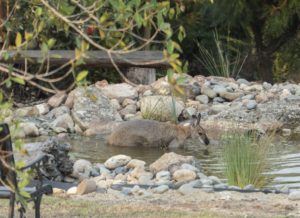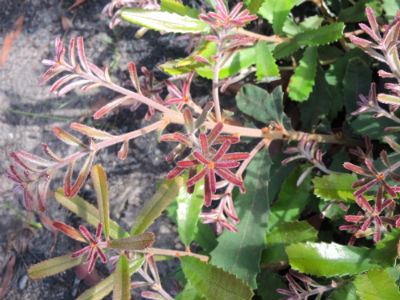The 2019/20 summer of bushfires has had devastating impacts, with lives and homes lost, communities disrupted and millions of hectares of native vegetation burnt. Fire is a natural part of the Australian environment, and plants can recover from fire, but fire behaviour and impacts are changing.
Fire impacts have caused much distress and prompted much public debate over the causes and solutions. Here are some ideas for APS members to help recovery of our natural environment from bushfires. There are based on ideas from Dan Clarke, APS NSW Conservation Officer, and academic sources including The Conversation website. Depending on your location and skills and regional priorities, there are different ways to help in the short term and long term.
Other suggestions are welcome. Email Rhonda Daniels, enewsletter editor at enewsletter@austplants.com.au
1. Help rescue and care for fauna
Fauna can be caught up in any natural disaster, just like us. We can help care for and rehabilitate animals injured in a bushfire. This may include leaving out water, providing nest boxes and, in special circumstances, plant vegetation providing critical food resources or supporting wildlife carers with supplies.

2. Undertake or get involved in flora or fauna monitoring
Monitoring recovery is important, especially of threatened plants where we know populations have been burnt. We can liaise with research organisations to provide local support or adopt a local patch to monitor impacts and recovery.
3. Be practical on the ground, noting priorities may vary by species and regions
- Control weeds to allow nature to recover.
- Control feral grazing animals and protect regenerating plants from animals with, for instance, temporary fencing and tree guards.
- Don’t disturb the soil where seeds from burnt plants are likely to be scattered.
- Don’t clear “dead” plants which may resprout and provide shelter for remaining wildlife, including perches for birds who may bring in seeds.
- Ensure areas are not stripped of seed in the rush to collect seed for revegetation.
- Donate to or volunteer with organisations supporting recovery and reducing future impacts
This could include organisations for weed removal, landcare, conservation, wildlife rescue and care, fire fighting, national parks and research.
For maximum impact, check what support is most wanted, and be clear what organisation you are donating to and that your donation is going towards what you intend.
5. Influence public policy to address causes, assist recovery and reduce future fire impacts
At an individual level, this could include writing direct emails or letters to decision makers or the media, commenting in social media, supporting peak lobbying organisations, and supporting an evidence-based approach whenever talking about fire recovery issues.
- Lobby politicians for more resources and protection of our natural areas to allow flora and fauna to recover.
- Protect natural areas which can act as refuges.
- Control feral pests and weeds and increase control efforts for pest animals and weeds that can worsen the impacts of these fires on wildlife.
- Ensure any activities allowed in national parks support recovery.
- Stop native vegetation clearing, especially unburnt vegetation home to threatened species and communities.
6. Be informed and correct misinformation
There is much community debate over causes of fires and solutions to reduce future impacts including land use and management in national parks, other natural areas and areas near development. Solutions should be based on research and evidence. Promote reputable sources of information, ensure you are well-informed, and discuss and share information with other people.
The Conversation website has published many articles by university academics and other researchers based on their years of research and evaluation of the evidence. The articles are short and free to access. Here’s just a selection of recent articles:
Pulling out weeds is the best thing you can do to help nature recover from fires by Don Driscoll
Conservation scientists are grieving after the bushfires – but we must not give up by Stephen Garnett and others
A season in hell: bushfires push at least 20 threatened species closer to extinction by John Woinarski
Many of our plants and animals have adapted to fires, but now the fires are changing by Cris Brack
Yes, native plants can flourish after bushfire. But there’s only so much hardship they can take by Lucy Commander and Heidi Zimmer
Weather bureau says hottest, driest year on record led to extreme bushfire season by Australian Bureau of Meteorology staff
Take care when examining the economic impact of fires. GDP doesn’t tell the full story by Janine Dixon

Researchers across diverse disciplines have devoted their working lives to understanding Australia’s natural environment, how plants and animals respond to fire, changing fire patterns, and recovery. There is much knowledge and research on all aspects of fire, including a well-established Bushfire and Natural Hazards Cooperative Research Centre. Let’s implement what we do know and keep working to fill our knowledge gaps.
